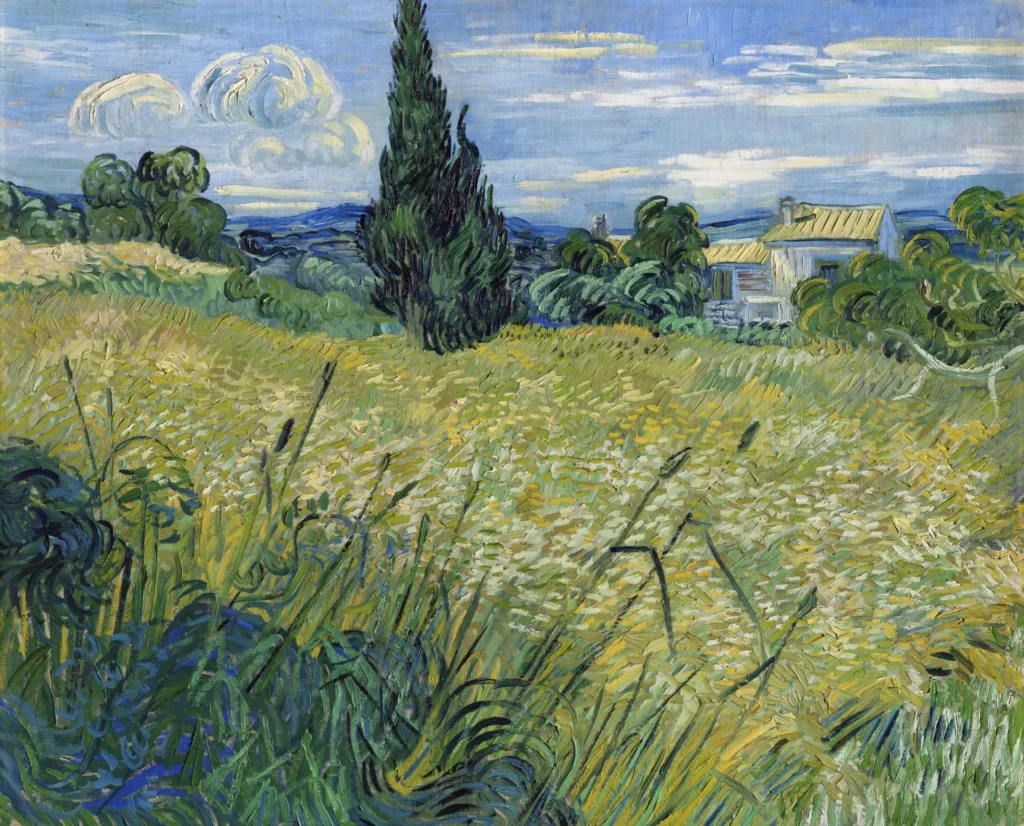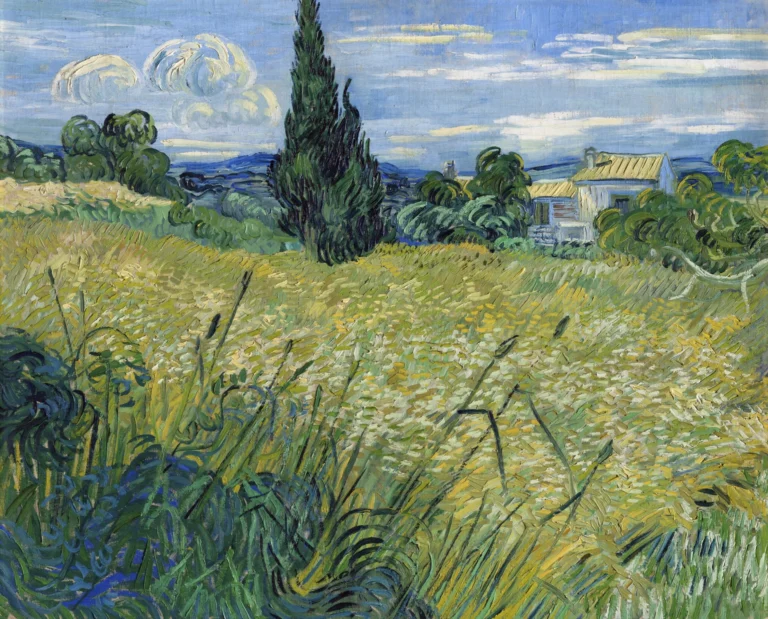Green Wheat Field With Cypress (1889)
Vincent van Gogh's Green Wheat Field with Cypress captures a serene landscape with lush green wheat fields complemented by a towering cypress tree. Painted while he was in the asylum at Saint-Paul de Mausole, this piece is marked by Van Gogh's bold brushwork and vivid colors. The painting is imbued with symbolic meaning, reflecting themes of life and mortality. The cyclical nature of wheat fields and the cypress tree represent both solace and eternal life for the artist.
Year 1889
About the Artwork
In June 1889, while living as a voluntary patient at the Saint-Paul de Mausole asylum in Provence, Vincent van Gogh found inspiration in the surrounding landscapes. After being permitted to paint outdoors, he created Green Wheat Field with Cypress, which depicts the tranquility and beauty of wheat fields under a dramatic sky. In his letters, Van Gogh expressed his profound connection to these natural elements, intertwining them with his feelings of hope and despair. The cypress, often seen in his works, symbolizes mourning and eternal life, enhancing the work's emotional depth.
Did You Know
Liked what you see? Add it to your collection.
Enjoyed reading? Share it.
... continued
Location and Collection
The painting is part of the collection at the National Gallery Prague, displayed at the Trade Fair Palace in the district of Holešovice, Prague, Czech Republic.
Composition and Description
The painting depicts a field of wheat that is largely green but with parts ripening to yellow. A tall, dark cypress tree dominates the composition, standing next to a small white house. In the background, there are the Alpilles Mountains, and above, a blue sky with white clouds. The scene is characterized by Van Gogh's typical impasto and relief style, although this painting gives a more balanced and peaceful impression compared to some of his other late works.
Creation Context
Van Gogh painted this work while he was a voluntary patient at the asylum of Saint-Paul de Mausole near Saint-Rémy in Provence. He wrote to his sister Wilhelmina about completing the painting on June 16, 1889, just a few days after he was allowed to paint outdoors.
Symbolism and Themes
The wheat fields and cypress trees held significant symbolic meaning for Van Gogh. Wheat fields represented the cycle of life and death, and he found both solace and inspiration in them. Cypress trees, which he depicted frequently, were also symbolic, often representing eternal life and mourning.
Technique and Pigments
The painting features Van Gogh's characteristic bold brushstrokes and organic, vigorously hatched brushwork. The colors used include chrome yellow for the wheatfield, viridian and emerald green for the bushes, and cobalt blue for the sky and mountains. The overall effect is one of vivid actuality and intense feeling.
Other Versions
Van Gogh created multiple versions of wheat fields with cypress trees during his stay at the asylum. While Green Wheat Field with Cypress is specific to the National Gallery Prague, other versions are housed in different collections, such as the Metropolitan Museum of Art in New York and the National Gallery in London.










